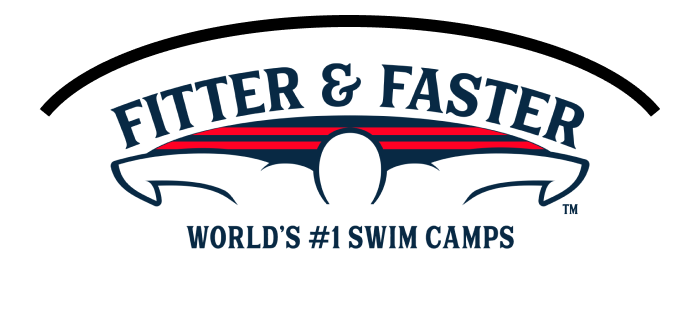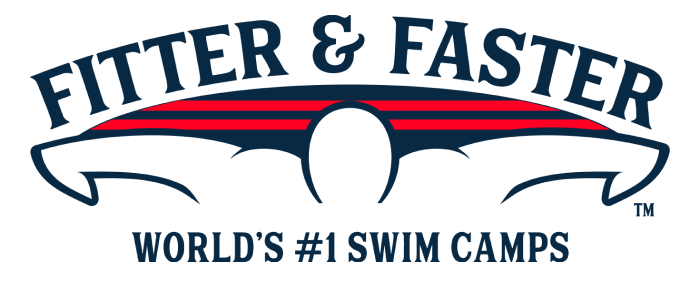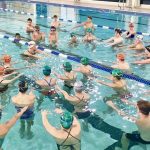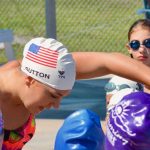Springfield, VA Swim Camp Series For Ages 13 & Over
The St. James
6805 Industrial Rd,
Springfield,
VA 22151
Introduction
Fitter & Faster is producing a series of swim camps and a video filming & analysis session for competitive swimmers ages 13 & over at the state-of-the-art facility The St. James, in Springfield, Virginia throughout 2025. Below, you'll also find links to additional swim camps for swimmers of other ages in Springfield.
SPRINGFIELD, VIRGINIA SWIM CAMP SERIES (Ages 13 & Over)
-> Comprehensive Butterfly Racing Swim Camp (November 29 & 30, 2025)
-> Fast Turns, Starts & Relay Exchanges Swim Camp (December 27-29, 2025)
VIDEO FILMING & ANALYSIS
October 25, 2025 (12-1 PM): Provide your swimmer with the chance to receive professional video analysis of their stroke, just like the pros. Choose to have one stroke filmed and analyzed with a single registration, or save by selecting the Camp + Video Bundle, which includes both days of the swim camp along with filming and analysis of all four strokes.
Click the “Curriculum Menu” below for details on each swim camp and video session.
-> Each session has limited availability to provide a focused, high-quality learning environment.
-> SAVE when you purchase an "Entire Camp Bundle” for your swimmer.
ADDITIONAL SWIM CAMPS FOR OTHER AGES IN SPRINGFIELD:
Select a curriculum below
VIDEO FILMING & ANALYSIS: October 25, 2025
Since so much of the stroke happens below water – it is incredibly important to see what’s going on below the surface! Small adjustments to your stroke can lead to big time drops! This is your opportunity to get beautiful footage of your stroke and get analysis from an expert… and you can review with your coach as well!
- ANALYSIS: Our Fitter and Faster expert will use a video analysis application to record their comments on your technique. They will use slow motion, pause the video at specific points, and draw on the swimmer's video all while explaining where opportunities for improvement are. Each stroke will have approximately 3 to 5 minutes of expert commentary that you can review with your coaches at home!
- DRILL RECOMMENDATIONS: You will receive recommendations for drills to correct the technique of each swimmer.
- SIGN UP: Select to have one stroke filmed. Or, SAVE by choosing to have all four strokes filmed. The "multi-stroke options" are for individual swimmers and cannot be split.
- ARRIVING AT THE POOL (Retain your order number): You will receive an e-mail approximately one week before the filming session with the specific time for your swimmer to check in, warm up, and be filmed. Please retain your order number - this is how swimmers will be identified on that schedule. When you arrive at the pool, you will be greeted by Fitter & Faster staff who will provide you instructions on the filming process.
- WARM UP: Participants will have an opportunity to warm up before filming.
- FILMING: Our camera operator will have you swim two 25s at a strong pace of each stroke purchased (1 stroke or all 4 strokes). The filming of each stroke will take about three minutes. The video will capture a side angle and a front angle below the water to get an accurate view of your technique.
- SESSION LENGTH: Depending on the number of strokes you are getting recorded, your session time will run between 5 and 15 minutes.
- TIMELINE: All videos will be analyzed and returned within 14 days of the camp. The analyzed videos along with the original video will be sent via email for you to keep!
COMPREHENSIVE BUTTERFLY RACING SWIM CAMP: November 29 & November 30, 2025
At the highest level of swimming, butterfly is the second fastest stroke and beautiful to watch because of its rhythmic and powerful strokes. There are some complexities to establishing a smooth, rhythmic fly, but with practice and attention to detail your swimmer can master the stroke and begin swimming it for longer distances and at very fast speeds! No matter your swimmer’s level, this 2-day camp will strengthen their butterfly technique, racing and training skills that will lead to faster and more efficient butterfly races! This swim camp will be led by Elite Clinician Mathew Whelan!
- DAY 1 (Saturday, November 29): BUTTERFLY TECHNIQUE: We want your swimmer to establish a rhythmic butterfly. Today we will practice various drills and skills that will enable your swimmer to have flowing hips and a long, more powerful butterfly stroke.
- Bodyline: A butterfly race is going to be fastest with a proper bodyline. Even the slightest adjustment of the chin, neck, and/or back can make a huge difference. As swimmers mature in the sport and grow physically, their body position shifts and bad habits can emerge. Participants will learn and practice proper posture and engagement of their core to have a strong foundation for better technique - creating a full-body connection for more hydrodynamic and efficient butterfly strokes.
- Kick: Each butterfly stroke has two kicks to propel the swimmer towards the other end of the pool! If the kicks are properly timed and equally strong, they can positively impact your swimmer’s efficiency and stroke timing! Your swimmer will work on how and when to kick in butterfly for maximum speed.
- Pull: Long and smooth strokes allow swimmers to have a more efficient and fluid butterfly. The pull in butterfly keeps a swimmer accelerating forward. Your clinicians will work with participants to establish an early vertical forearm, “the catch”, enabling the swimmers to put immediate pressure back on the water. Properly completing the stroke keeps the swimmer moving forward efficiently and fast.
- Breath: The timing of the breath in butterfly has a direct relationship on a swimmer’s body position, pull, kick and TIMES! At this camp, we will work with participants on breathing with their chin low to the water... and WHEN to breathe in their stroke cycle so that they develop the most efficient stroke possible!
- DAY 2 (Sunday, November 30): BUTTERFLY RACING AND TRAINING SKILLS: On the first day of this camp swimmers worked on skills to implement a solid, efficient butterfly stroke. On Day 2 we will work on racing skills and apply speed to their butterfly. Your swimmer's elite clinicians will work with participants on maintaining their technique by developing proper distance per stroke, appropriate race tempo, and training for a faster and stronger butterfly.
- Stroke Length: Lengthening your swimmer’s butterfly stroke will enable them to “catch” and hold onto more water to propel them as they swim. In butterfly, it is particularly important to establish a “rhythmic flow”. We will teach participants how to stay long and avoid a short butterfly stroke that is inefficient and not sustainable for very long. The clinicians will work with participants on this important skill for swimming fast butterfly.
- Tempo: Tempo in butterfly is the rate at which a swimmer is moving their arms and hips. When swimming butterfly races many athletes tend to take too many short strokes (“spin their wheels”) and not “hold onto the water”. At this camp we will explore different tempos that are sustainable for any distance your swimmer is racing.
- Powerful Underwater Dolphin Kicking: There are a few different techniques that swimmers use when underwater dolphin kicking. The common theme of these techniques is that the best swimmers kick up and down with equal power. We will show your swimmer the different techniques that elite swimmers use and teach them how to implement.
- Speed Set: At the end of this session your swimmer will do a short and fast swim set to practice everything they have learned over the past two days.
FAST TURNS, STARTS & RELAY EXCHANGES SWIM CAMP: December 27 - December 29, 2025
The momentum generated from explosive starts and turns is the FASTEST that top age group and elite swimmers experience in a race! The more efficient, powerful, and hydrodynamic your swimmer is, the greater the speed and distance they can cover in the water before taking their first stroke. Swimmers will work with elite clinicians to refine fast, efficient starts, turns, and relay exchanges, focusing on smooth transitions that maximize momentum and reaction time advantages, ensuring they gain every possible edge in competition
- DAY 1 (Saturday, December 27): FLIP TURNS & OPEN TURNS: Quick, powerful turns are crucial to fast times and winning close races. The top age group and elite swimmers aren't using walls just for turning around - they are used to generate speed and momentum going into the next lap. Executing a great turn doesn’t end when a swimmer pushes off the wall. We will work with your swimmer on their streamline, dolphin kicks, and breakouts. Elite swimmers are constantly working their turns and looking for areas to improve them. Today, we're going to work with your swimmer on taking this crucial part of every race (and practice) to the next level!
- Momentum: At the elite level of swimming, walls aren’t just used for turning around - they are used to generate speed and momentum going into the next lap. Outside of the elite ranks, most swimmers stop or slow down while going into the wall, which kills their momentum! We will work with participants on the intricacies of approaching every wall at top speed and seamlessly initiating their “turn”.
- Flip Turns: The fastest swimmers use walls to generate speed and momentum going into the next lap. Outside of the elite ranks, many swimmers stop or slow down while going into the wall, which kills their momentum! We will work with participants on the intricacies of approaching every wall at top speed and seamlessly initiating their “turn”.
- Open Turns: Elite butterflyers and breaststrokers utilize speed from their last lap to create momentum and even more speed at the beginning of the next lap. Their open turns are actually not “turns”, but more like high-speed pivots. Participants in this session will work on these techniques to have much faster open turns!
- DAY 2 (Sunday, December 28): STARTS, UNDERWATERS & BREAKOUTS: The better a swimmer’s technique is off the starting block, the more speed they will carry into the water. Day 2 of this swim camp will help your swimmer improve their start, underwater dolphin kicking and breakouts! This sequence is not only the fastest part of every race, but it is also the part of the race in which elite swimmers cover the most ground with the most efficiency.
- Block Starts: To ensure an explosive start, a swimmer needs to set themselves up properly on the block. The elite clinicians will work with participants on the optimal positioning of your swimmer’s entire body to allow for a quick reaction time and optimal speed.
- Water Entry: Starting the race with a smooth entry into the water will boost your swimmer's speed and carry the momentum generated off the block or wall. Becoming skilled at the water entry is crucial for any start and significantly contributes to your swimmers' overall race!
- Streamline: The streamline - when done properly - is the fastest a swimmer travels while in the water. Proper streamlines are even faster than underwater dolphin kicking. Even the most elite swimmers in the world are constantly working on improving their streamline. Your swimmer will get tips to improve their streamline and a better appreciation of what they need to do on every single wall in practice and in races.
- Initiating Underwater Dolphin Kicking: Top age group and elite swimmers maximize their streamline on every single lap. They don’t start their underwater dolphin kicking while they’re still achieving maximum speed in their streamline! They also don’t want to start the underwater dolphin kicking after their streamline has begun to slow. Your swimmer is going to learn how to time when to begin their underwater dolphin kicking.
- Powerful Underwater Dolphin Kicking: There are a few different techniques that swimmers use when underwater dolphin kicking. The common theme of these techniques is that the best swimmers kick up and down with equal power. We will show your swimmer the different techniques that elite swimmers use and teach them how to implement.
- Number of Underwater Dolphin Kicks: Figuring out the optimal number of kicks off each wall, for each race, is essential to fast swimming. Elite swimmers want to spend only the absolute necessary amount of time underwater to establish speed with each length. They want to avoid losing their breath and taking weak kicks.
- Breakouts: Many swimmers unintentionally add movements in their breakouts that reduce speed by creating drag. In this camp, participants will focus on perfecting their breakout timing to maintain momentum and power into each lap.
- DAY 3 (Monday, December 29): RELAY EXCHANGES: Relay exchanges are an essential skill in swimming that can make your swimmer much faster, but they don’t get enough practice. A quick, strong relay exchange can be the difference between winning and losing for your swimmer’s team!
- Relay Exchange Momentum: One advantage of relay starts is that swimmers can generate additional momentum off the blocks by moving forward both with their feet and a great arm swing. There are several different relay start techniques that are currently in competitive use (one-step, two-step, hop, and step-over). We will introduce your swimmer to different techniques in order to find the fastest for them as an individual. Finally we will work on carrying this momentum through a smooth entry and great breakout.
- Relay Exchange Reaction Time: In relays, reaction time is crucial! At this camp your swimmer will learn skills that the best swimmers in the world use to time the “exchange” just right! If we react too quickly, we’ll start before the other swimmer finishes - and we’ll get disqualified. If we start too slow, we can lose our positioning in a race! Learning the proper technique for a well-timed start and an explosive relay dive will make your swimmer a valuable teammate.
- Finishes: A well-timed finish is crucial for great relay exchanges. Your swimmer will learn techniques to set themselves up for a well-timed finish about 10 yards from the wall.
SESSION START TIMES FOR NOV & DEC:
- Check in 12:30 PM, Camp 12:45-3:45 PM
- Depending on the number of strokes you are getting recorded, your session time will run between 5 and 15 minutes
- You will receive an email a week before the filming session with the specific time for your swimmer to check in, warm up, and be filmed.
- Swimmer's scheduled time will be between 12-1 PM.
- Video Filming & Analysis is for ALL swimmers, including adults!
ASK QUESTIONS
Swimmers and parents are invited to ask the clinicians questions during a Q&A session. Gain insight into their training regimen, diet and nutrition, and recovery tactics.
WATCH THE CLINICIANS
Observe clinicians swim at full speed and demonstrate a progression of perfectly executed drills to achieve powerful, efficient, and fast swimming.
PUT YOUR SKILLS TO THE TEST
Throughout the camp, swimmers will practice what they've learned with some of the world's most elite Swimmer Clinicians and coaches!
Take a photo, get autographs, and chat with your clinicians!
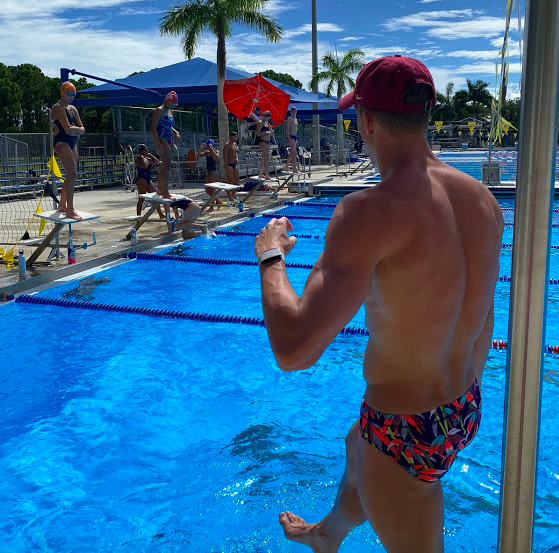
Matthew Whelan
With a coaching philosophy centered on clear communication and individualized attention, Matthew empowers swimmers to reach new heights. Sign up now to learn from a champion and take your swimming journey to the next level with Matthew

Tyler Clary
Tyler Clary won an Olympic gold medal in the 200 backstroke. He is also a dominant force in butterfly, freestyle, and IM! Talk about a master of all things swimming! Not only is Tyler obviously an incredible athlete, his swimming abilities are on par with his teaching abilities. You'll be amazed at how well he teaches the finer details of swimming fast!
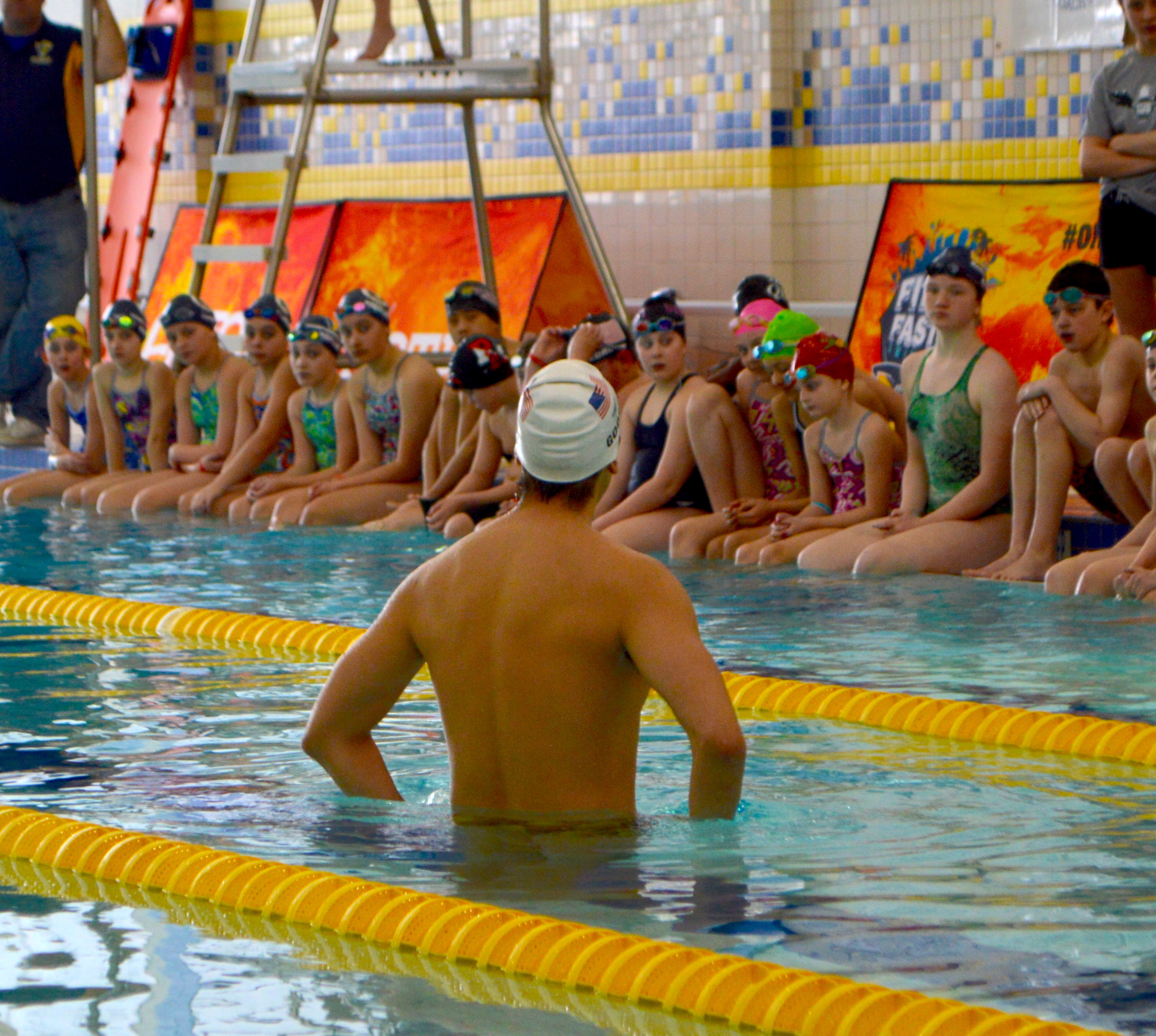
Elite Clinician
Fitter and Faster clinicians are Olympians and National Team members who have achieved at the highest level of the sport of swimming... and who have the unique skill to teach what they know from a technical perspective to swimmers of all ages and abilities.
Inquisitive, Educated Swimmers are Faster Swimmers! Sign up today!


